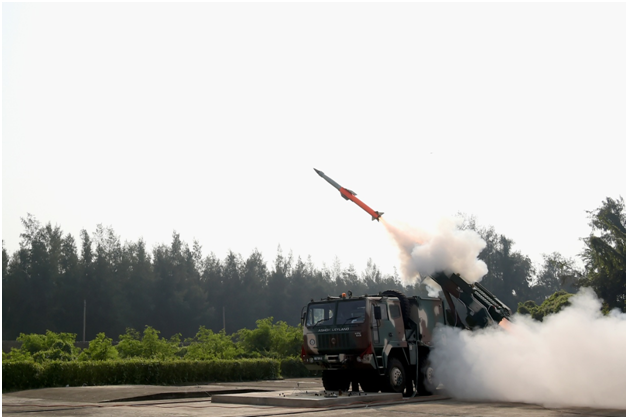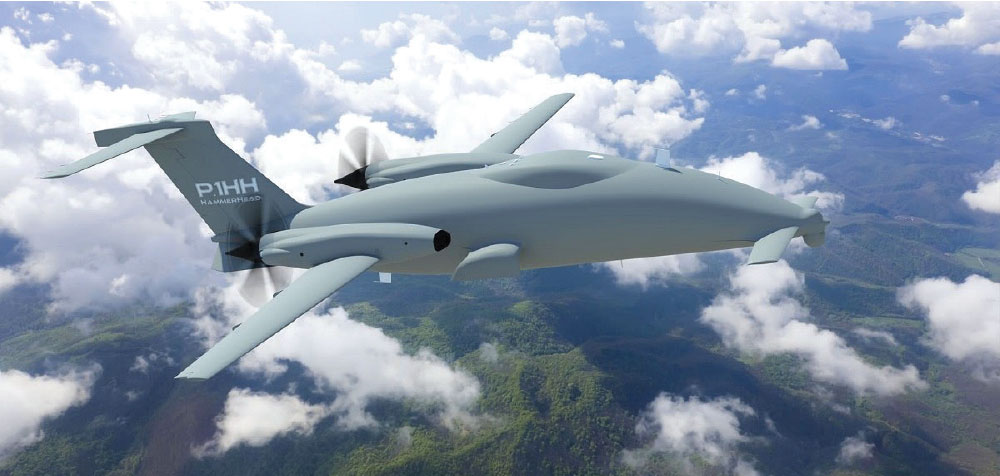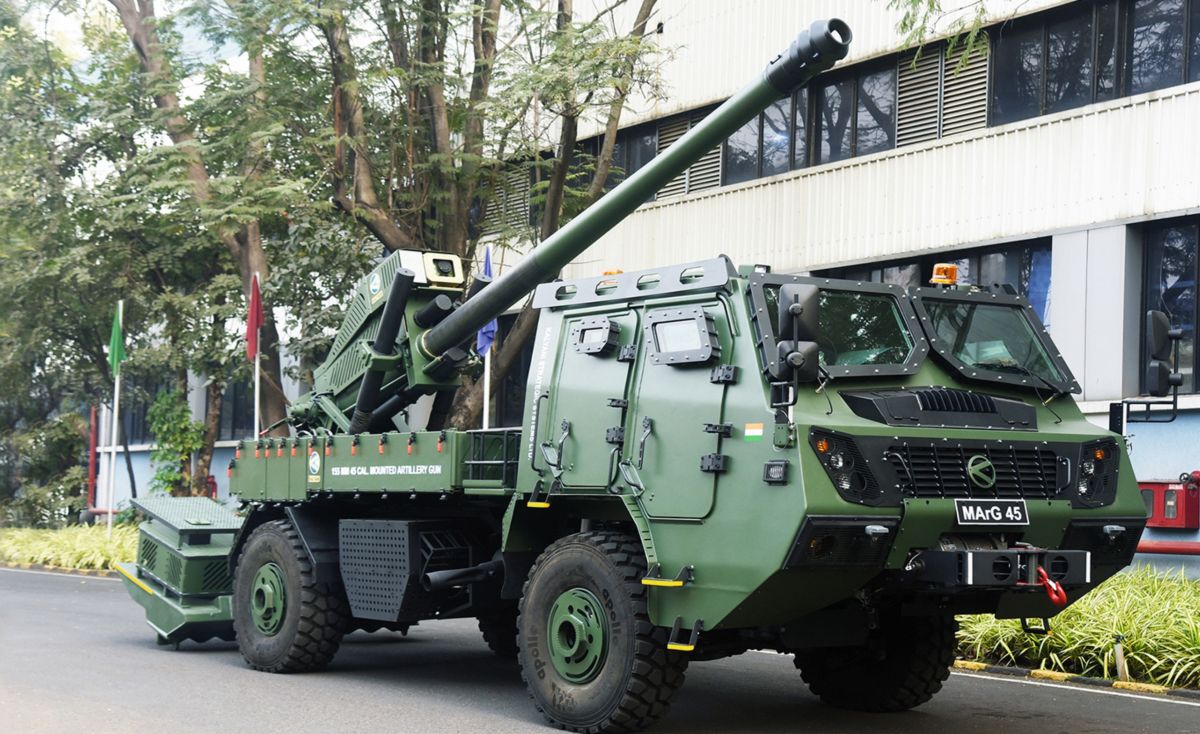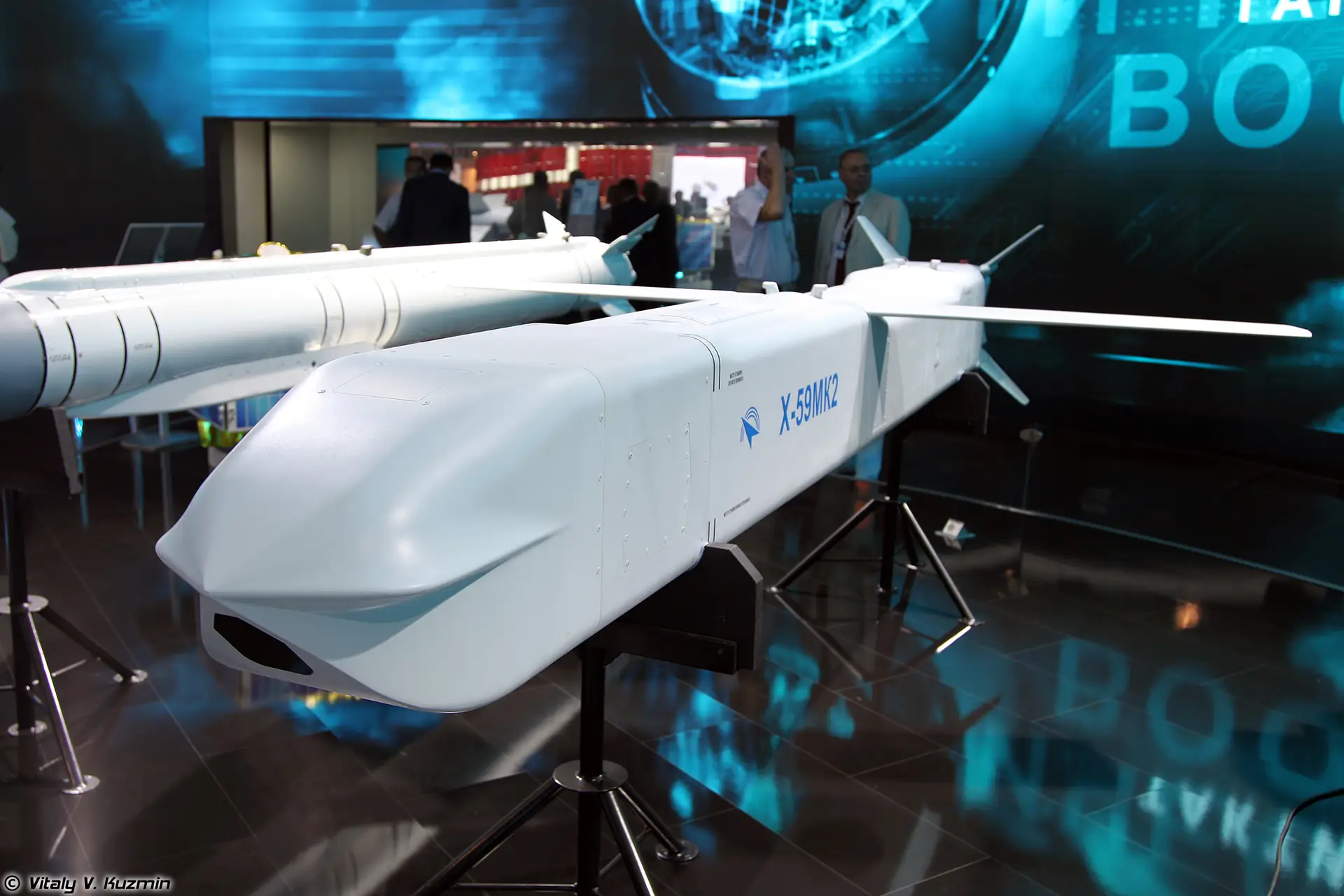News Beat
News Beat reporting is an idrw.org initiative to let our Readers to report News Based on Actual facts but some how has not been reported in Main Stream Media .
SOURCE: RAUNAK KUNDE / NEWS BEAT / IDRW.ORG

The Indian Air Force (IAF) and the Defence Research and Development Organisation (DRDO) are intensifying efforts to expedite the development of an Air-Launched Sub-Sonic Cruise Missile, a derivative of the Indigenous Technology Cruise Missile (ITCM). This new missile, designed to enhance the IAF’s long-range precision strike capabilities, will feature tailored modifications to meet the demands of air-launched operations, offering a cost-effective alternative to the supersonic BrahMos-NG. According to sources cited by idrw.org, the missile is poised to become a key addition to the IAF’s arsenal, capable of striking targets deep inside enemy territory with a range of 500-600 km.
The Air-Launched Sub-Sonic Cruise Missile, built on the ITCM platform, will incorporate several modifications to optimize its performance when deployed from fighter aircraft. Unlike its ground-launched ITCM counterpart, the air-launched variant will eliminate the booster stage, as the missile will be jettisoned directly from an aircraft, leveraging the platform’s altitude and velocity for initial propulsion. The airframe will undergo minor changes to ensure seamless integration with IAF fighter jets, including the Su-30 MKI, MiG-29, Rafale, and Tejas, as well as future platforms like the Advanced Medium Combat Aircraft (AMCA).
Continue readingSOURCE: RAUNAK KUNDE / NEWS BEAT / IDRW.ORG

In a significant stride towards self-reliance in defense technology, the Transmission Technology Centre (TTC) division of the Combat Vehicles Research and Development Establishment (CVRDE), under the Defence Research and Development Organisation (DRDO), has successfully designed and developed an indigenous 1500HP Automatic Transmission, christened DATRAN-1500. This cutting-edge system, developed in collaboration with Larsen & Toubro (L&T) as the Development-cum-Production Partner (DcPP), is set to power India’s next-generation Armoured Fighting Vehicles (AFVs), bolstering the nation’s defense capabilities.
The DATRAN-1500 is a testament to India’s growing expertise in advanced defense technologies. This state-of-the-art automatic transmission system is engineered to meet the rigorous demands of modern armored platforms, offering enhanced mobility, reliability, and operational efficiency. With a power capacity of 1500 horsepower, the DATRAN-1500 is designed to provide superior performance for heavy-duty AFVs, ensuring seamless power delivery and operational agility in diverse combat scenarios.
Continue readingSOURCE: RAUNAK KUNDE / NEWS BEAT / IDRW.ORG

Sudhir Mishra, former CEO of BrahMos Aerospace, has revealed that the BrahMos-NG (Next Generation) missile, currently under development, holds the potential to be adapted as an air-to-air missile system. However, he clarified that this variant is not intended for engaging fighter jets at long range. Instead, it is designed to neutralize larger, high-value aerial targets such as Airborne Warning and Control Systems (AWACS), mid-air refuelers, and transport aircraft.
The BrahMos-NG, a lighter and more compact version of the original BrahMos missile, weighs approximately 1.3 tons and is primarily being developed for the Indian Air Force (IAF) as an air-to-ground or air-to-sea weapon.
Continue readingSOURCE: RAUNAK KUNDE / NEWS BEAT / IDRW.ORG

India’s ambitious fifth-generation Advanced Medium Combat Aircraft (AMCA) program is set to take a significant leap forward as the Aeronautical Development Agency (ADA) collaborates with private sector companies and academic institutions to fast-track the integration of artificial intelligence (AI) and autonomous systems. This strategic partnership aims to position the AMCA as a cutting-edge fighter jet, aligning with the Indian Air Force’s (IAF) vision of a highly autonomous, AI-driven platform capable of meeting the demands of modern aerial warfare.
According to an ADA official speaking to idrw.org, the development of AI and autonomy for the AMCA will unfold in multiple phases, as outlined in close coordination with the IAF. The IAF and ADA have meticulously defined the levels of independence to be incorporated, ensuring the aircraft evolves into a force multiplier that blends human oversight with advanced machine intelligence. This phased approach will see the AMCA’s AI capabilities progressively enhanced, adapting to operational needs and technological advancements over time.
Continue readingSOURCE: RAUNAK KUNDE / NEWS BEAT / IDRW.ORG

The Indian Air Force (IAF) is closely monitoring the development of the Abhimanyu Collaborative Combat Aircraft (CCA), a cutting-edge jet-powered drone designed by Bengaluru-based NewSpace Research and Technologies in partnership with the Indian Navy. Unveiled at Aero India 2025, Abhimanyu represents India’s first privately developed, jet-powered unmanned aerial system (UAS), poised to redefine tactical air warfare through its advanced capabilities and manned-unmanned teaming (MUM-T) framework. This innovative platform, tailored for high-speed, long-range combat roles, is sparking significant interest across India’s defense ecosystem, with the IAF exploring its potential to complement its own combat air teaming initiatives.
Abhimanyu is not just another drone; it is a modular, artificial intelligence (AI) and machine learning (ML)-powered combat aircraft designed to operate as a “loyal wingman” alongside manned fighter jets. With a compact 4-meter wingspan and a low radar cross-section (RCS) design, it incorporates features like recessed engine intakes and a continuous chine-line to minimize radar detection, making it ideal for high-risk missions. The drone’s specifications include a top speed of approximately 300 knots (550 km/h), a range of 1,000 kilometers (620 miles), and a service ceiling of 20,000 feet, positioning it as a versatile asset for both naval and potential air force applications.
Continue readingSOURCE: RAUNAK KUNDE / NEWS BEAT / IDRW.ORG

In the wake of Pakistan’s unsuccessful attempt to neutralize India’s prized S-400 Triumf air defense system using the Chinese-supplied CM-400AKG supersonic missile during recent border clashes, the Indian Air Force (IAF) is taking decisive steps to enhance its air defense architecture. The IAF is now planning to deploy an additional layer of protection for its S-400 systems, potentially through the procurement of truck-based Very Short Range Surface-to-Air Missiles (VL-SRSAM) or Quick Reaction Surface-to-Air Missiles (QRSAM). This move aims to fortify the S-400’s defenses against evolving threats, ensuring India’s air defense network remains robust and resilient.
The S-400, known as the “Sudarshan Chakra” in India, is a long-range surface-to-air missile (SAM) system capable of engaging targets up to 400 km away. Regarded as a strategic asset, it has significantly strengthened India’s ability to counter aerial threats, including aircraft, cruise missiles, and ballistic missiles. Pakistan’s attempt to target the S-400 using the CM-400AKG, launched from a JF-17 Thunder fighter jet, was thwarted by India’s layered air defense network, with an older Russian-origin system reportedly neutralizing the threat. This incident highlighted both the limitations of the Chinese missile and the effectiveness of India’s integrated air defense grid.
Continue readingSOURCE: RAUNAK KUNDE / NEWS BEAT / IDRW.ORG

In a transformative development for India’s indigenous fighter aircraft programs, the Tejas Mk-II, slated for rollout later in 2025 and production by 2029, will incorporate advanced artificial intelligence (AI) capabilities derived from the Advanced Medium Combat Aircraft (AMCA) program. This integration, aimed at enhancing pilot efficiency and operational synergy between the Tejas Mk-II and AMCA, marks a significant leap in India’s pursuit of cutting-edge aerospace technology.
According to sources close to idrw.org, the AI system for the Tejas Mk-II will focus on sensor fusion, integrating data from the aircraft’s radar, electronic warfare suite, and other sensors to provide pilots with real-time situational awareness. In air-to-air missions, for instance, the AI will analyze radar data to identify and prioritize high-threat targets, such as enemy aircraft or missiles, and suggest optimal engagement strategies. This decision-support capability will reduce pilot workload, enabling faster and more precise responses in high-stakes combat scenarios.
Continue readingSOURCE: RAUNAK KUNDE / NEWS BEAT / IDRW.ORG

Tata Advanced Systems Limited (TASL), one of India’s premier aerospace and defence manufacturers, has announced plans to develop a Medium Altitude Long Endurance (MALE) class Unmanned Aerial Vehicle (UAV), marking another step toward strengthening the country’s indigenous unmanned systems capabilities.
According to information shared with idrw.org, the proposed UAV will be powered by a propeller-driven engine mounted at the rear—a configuration that enhances aerodynamic efficiency and reduces noise signature, especially useful during surveillance missions. The platform will also feature an Electro-Optical (EO) sensor payload and incorporate a tailwheel landing gear system, suggesting a robust and potentially short-field takeoff and landing capability.
Continue readingSOURCE: RAUNAK KUNDE / NEWS BEAT / IDRW.ORG

Armenia, seeking to modernize its artillery capabilities amid ongoing tensions with Azerbaijan over Nagorno-Karabakh, has emerged as a key buyer of India’s indigenous defense systems, particularly the MArG 155mm/39 caliber wheeled self-propelled howitzer developed by Kalyani Strategic Systems Limited (KSSL), a subsidiary of Bharat Forge.
In 2022, Armenia secured a $155.5 million contract for 72 MArG 39 howitzers, marking a significant milestone in India-Armenia defense ties. Following successful operational tests of the MArG 39 across various Armenian terrains, the country is now evaluating the upgraded MArG 45, a 155mm/45 caliber variant offering enhanced range and firepower. Sources cited by the Indian Defence Research Wing (idrw.org) indicate that Armenia’s positive experience with the MArG 39, combined with its need for lightweight, mobile artillery suited for mountainous regions, prompted interest in the MArG 45.
Continue readingSOURCE: RAUNAK KUNDE / NEWS BEAT / IDRW.ORG

In a strategic move to enhance the Indian Air Force’s (IAF) air-to-air combat capabilities, the Indian Ministry of Defence (MoD) is contemplating establishing two separate production lines for the Astra Mk-II Beyond Visual Range Air-to-Air Missile (BVR-AAM), which is poised to become the IAF’s primary weapon of choice for its fighter fleet.
According to sources cited by idrw.org, the missile, featuring a dual-pulse rocket motor and a range of 160 km, is in its final phase of user trials and is expected to be cleared for production and operational use in 2026. This development marks a significant step in India’s pursuit of self-reliance in defence manufacturing, with the Astra Mk-II set to arm key platforms like the Su-30MKI, Rafale, MiG-29K, and Tejas Mk-1A.
Continue readingSOURCE: RAUNAK KUNDE / NEWS BEAT / IDRW.ORG

In the wake of the recent skirmish between India and Pakistan, operational lessons have brought renewed focus on the need to enhance India’s stand-off strike capabilities across platforms. While the French-origin SCALP cruise missile, fired from IAF’s Rafale fighter jets, achieved notable success during strikes on Pakistani airbases, the Su-30MKI fleet faced a limitation due to the restricted number of air-launched BrahMos-A cruise missiles available for operational use.
However, this scenario may soon shift dramatically, as Russia has formally offered the stealthy Kh-69 cruise missile for integration on India’s Su-30MKI fighters. According to sources familiar with the development, the offer comes amidst a broader push by Moscow to deepen its defence collaboration with New Delhi and enhance the combat versatility of India’s frontline multi-role fleet.
Continue readingSOURCE: RAUNAK KUNDE / NEWS BEAT / IDRW.ORG

The Kaveri Engine Derivative (KDE) program, a cornerstone of India’s push for indigenous aerospace propulsion, is poised for a significant boost with additional funding from the Ministry of Defence (MoD). This financial support, expected to be approved soon, aims to accelerate the development of the KDE, including the testing of a new afterburner being developed by BrahMos Aerospace Corporation. The funding will also facilitate the integration and testing of the engine on an older Limited Series Production (LSP) Tejas aircraft, laying the groundwork for future enhancements and broader applications.
The KDE, a non-afterburning variant derived from the original Kaveri engine developed by the Gas Turbine Research Establishment (GTRE) under the Defence Research and Development Organisation (DRDO), is designed to power the DRDO Ghatak stealth Unmanned Combat Aerial Vehicle (UCAV). Recent advancements have seen the dry variant achieve a stable thrust of 49-51 kN, with the addition of a BrahMos-developed afterburner targeting an additional 29 kN, potentially pushing the total thrust to around 78-80 kN. This upgrade is a critical step toward meeting the thrust requirements for advanced platforms, including potential integration into manned fighters like the Tejas Mk1A.
Continue readingSOURCE: RAUNAK KUNDE / NEWS BEAT / IDRW.ORG

The Ministry of Defence (MoD) is reportedly set to examine a significant proposal from Russia involving the export of its advanced Su-57E fifth-generation fighter jet to the Indian Air Force (IAF). According to CNBCTV18, the MoD is likely to consider an off-the-shelf purchase of the Su-57E, a move that could bolster India’s aerial capabilities in response to regional security challenges.
The initial report of this offer came from idrw.org, which highlighted Russia’s proposal to provide the Su-57E with full source code access and an opportunity for local manufacturing at Hindustan Aeronautics Limited’s (HAL) Nashik plant, where the Su-30MKI fighters were previously produced.
Continue readingSOURCE: RAUNAK KUNDE / NEWS BEAT / IDRW.ORG

In a strategic move to counter the growing threat of unmanned aerial vehicles (UAVs), the Indian Air Force (IAF) and Indian Army are set to transform Hindustan Aeronautics Limited’s (HAL) Light Combat Helicopter (LCH) into a dedicated anti-UAV platform by integrating Very Short-Range Air Defence (VSHORAD) systems.
According to information provided to idrw.org both services are keen to procure LCH units equipped with VSHORAD to neutralize long-range Medium-Altitude Long-Endurance (MALE) and High-Altitude Long-Endurance (HALE) UAVs, as well as swarm drones and loitering munitions. This development reflects India’s urgent need to address the proliferation of drones in modern warfare, particularly in light of regional threats from Pakistan and China, and aims to enhance the LCH’s versatility as a multi-role combat platform.
Continue readingSOURCE: RAUNAK KUNDE / NEWS BEAT / IDRW.ORG

Reliance Defence has entered into a strategic cooperation agreement with Germany’s Diehl Defence to produce Vulcano 155mm precision-guided munitions in India. A new manufacturing facility in Ratnagiri, Maharashtra, will drive this initiative, aligning with the Indian government’s Make in India and Atmanirbhar Bharat initiatives. The partnership aims for over 50% indigenous value addition, bolstering India’s defence manufacturing capabilities and supporting its export ambitions.
The Vulcano family of munitions offers enhanced range and precision, making it compatible with a variety of land and naval platforms, including 155mm and 5-inch (127mm) gun systems. Designed to counter air, land, and sea threats, Vulcano leverages cutting-edge technology with a fin-stabilized airframe and canard control for extended range and terminal guidance. Its mechanical interfaces match those of standard ammunition, ensuring seamless integration.
Continue reading